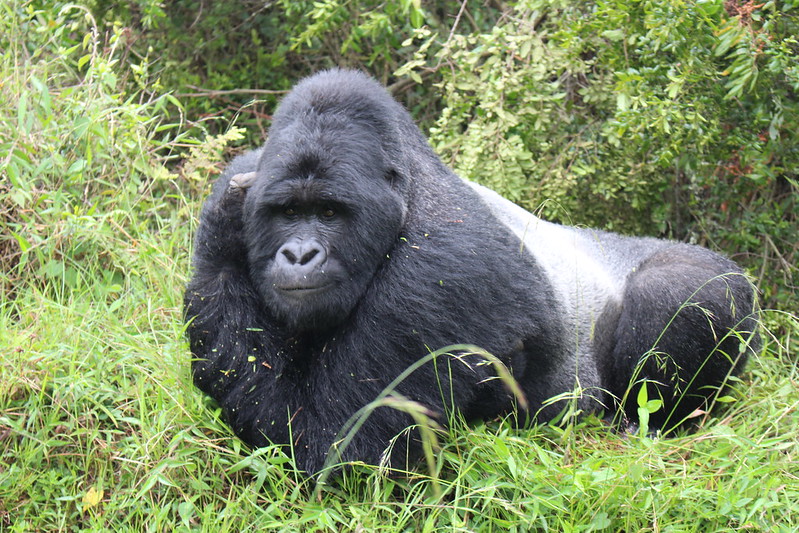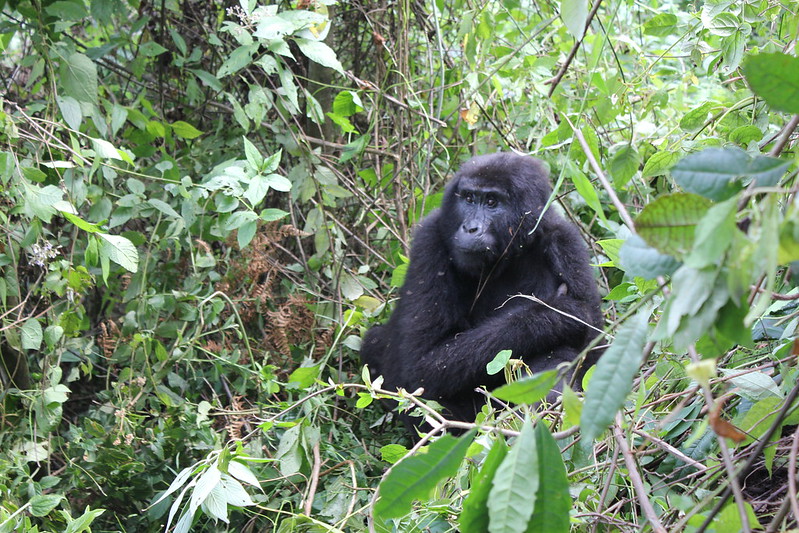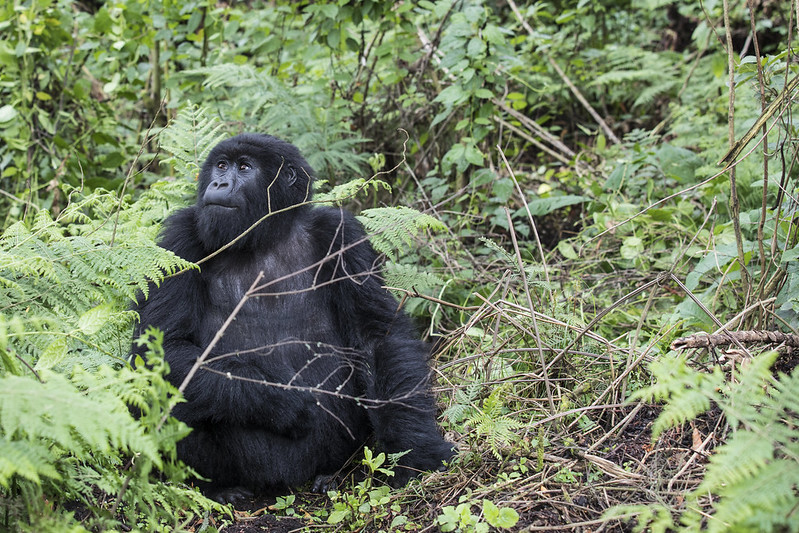
Frequently asked questions about gorilla trekking
Frequently asked questions about gorilla trekking.
Common inquiries concerning gorilla trekking Gorilla trekking is the most well-known activity that draws a lot of tourists to Africa. It entails travelers entering a tropical jungle to look for habituated mountain gorillas. Gorilla trekking can be done in a variety of locations, such as the Congo’s Kahuzi Biega National Park, Rwanda’s Volcanoes National Park, Uganda’s Bwindi Impenetrable National Park, and Uganda’s Mgahinga Gorilla National Park.
The most common queries that tourists have regarding gorilla trekking are included below, along with their responses.
Gorilla trekking: what is it?
Gorilla trekking is a thrilling sport that allows visitors to journey through a tropical jungle in search of habituated mountain gorillas. Once they are located, they can spend an hour with the primates in their natural environment.
Where to go trekking with gorillas
Gorilla trekking is a fascinating pastime that is practiced in the Democratic Republic of the Congo, Rwanda, and Uganda. In Rwanda, gorilla trekking is done in Volcanoes National Park, while in the Democratic Republic of the Congo, it is done in Virunga National Park and Kahuzi Biega National Park. In Uganda, gorilla trekking is done in two national parks: Bwindi Impenetrable National Park, which is home to the greatest number of gorillas, and Mgahinga Gorilla National Park.
What is the experience of gorilla habituation?
The technique of training wild mountain gorillas to become accustomed to human presence for trekking is known as “gorilla habituation.” It takes two to three years to complete the gorilla habituation experience, which is exclusively conducted in the Rushaga sector in the southern portion of Bwindi Impenetrable National Park. Visitors can spend four hours with the mountain gorillas in their natural habitat if they participate in the habituation experience.
The ideal time of year to go gorilla trekking
While gorilla trekking is possible at any time of year in Bwindi Impenetrable National Park, Mgahinga Gorilla National Park, Volcanoes National Park, Virunga National Park, and Kahuzi Biega National Park, the best time to go is during the dry season, also known as the peak season, which runs from June to September and December to February.
This is because there is less or no rainfall in the national parks during this time, making access roads and gorilla trekking trails passable and making trekking easier than during the wet season, when the trails are muddy, slippery, and wet, making trekking challenging.
Things to bring on your gorilla trekking excursion
Hiking shoes, garden gloves, long-sleeved shirts and trousers, a waterproof rain jacket, long socks, a warm seater, energy snacks and drinking water, face masks, a camera and extra batteries, a pair of binoculars, insect repellent, a walking stick, and a backpack are some of the essentials that travelers should bring when going on a gorilla trekking safari in Uganda, Rwanda, or the Congo.
How old must a person be to go gorilla trekking?
The Rwanda Development Board (RDB), a government agency in Rwanda, the Uganda Wildlife Authority (UWA), which oversees tourism in Uganda, and Virunga tourism established the minimum age requirement for gorilla trekking in Rwanda and the Democratic Republic of the Congo at 15 years old. While their parents hike gorillas, children under the age of fifteen will participate in additional safari activities such as guided nature walks and cultural tours.
How much time does it take to go gorilla trekking?
Because gorillas like to roam around in search of food, gorilla trekking in Bwindi Impenetrable National Park, Mgahinga Gorilla National Park, Volcanoes National Park, Virunga National Park, and Kahuzi Biega National Park can take anywhere from two to seven hours, depending on where the gorillas are. Once you find them, you can spend an hour with them in their natural habitat, which allows you to observe how they go about their daily lives, learn more about their habits, take pictures, and record videos using a flash-free camera.
What is a permit for gorilla trekking?
Any visitor over the age of 15 who wants to visit a habituated gorilla family and spend an hour with the mountain gorillas must have a gorilla trekking permit, which is a legal card or document provided by the Rwanda Development Board, Uganda Wildlife Authority, and Virunga tourism offices.
The price of a permit for gorilla trekking
A gorilla trekking permit in Volcanoes National Park costs 1,500 USD per person for all nationalities, while in Kahuzi Biega National Park and Virunga National Park, it costs 400 USD per person for foreign non-residents. In Bwindi Impenetrable National Park and Mgahinga Gorilla National Park, it costs 800 USD per person for foreign non-residents, 700 USD per person for foreign residents, and 300,000 UGX per person for East African citizens. The cost of a gorilla trekking permit varies depending on the gorilla destination you want to visit.
How to reserve a permit for gorilla trekking
A reliable tour operator like Experiya Tour Company can help you book gorilla trekking permits in Uganda, Rwanda, and the Congo. Simply contact us with the date, month, year, and gorilla destination you want to visit. After getting in touch with us, we will see whether there are any permits available on the dates you have selected. whether so, you will be required to pay a deposit for the permit. We will be able to buy the permit on your behalf as soon as the payment is received.
When to reserve permits for gorilla trekking
Because gorilla trekking permits in Uganda, Rwanda, and the Congo are competitive and typically sell out rapidly, especially during the peak season in June, July, August, September, December, January, and February, reservations should be made three to six months before to the trekking date. Therefore, it is recommended that you make reservations in advance to avoid last-minute disappointments. Common inquiries concerning gorilla trekking
What does the permit for gorilla trekking include?
The gorilla trekking ticket covers park entrance costs for both Mgahinga Gorilla National Park and Bwindi Impenetrable National Park, as well as one hour spent with mountain gorillas with the assistance of an experienced park guide and armed park officers.
How likely is it to see the mountain gorillas?
There is a 99% likelihood of spotting mountain gorillas in Rwanda, Congo, and Uganda, and a 1% chance of trekking to the gorillas’ habitat.
The maximum number of individuals permitted to trek with a gorilla family
Each habituated gorilla family may have up to eight visitors per day. Gorilla families are assigned based on age, level of physical fitness, and personal preference; therefore, if you are not physically fit, you should talk to your driver guide so that they can assign you to a gorilla family that is easy to trek.
Rules and regulations for gorilla trekking
Travelers should abide by a number of gorilla trekking guidelines when participating in gorilla trekking and when near mountain gorillas. These guidelines include
Reduce the volume of your voice when hiking and around mountain gorillas.
Pay attention to the directions provided by the guide.
When you are around mountain gorillas, wear a face mask.
Avoid leaving trash in the forest.
Maintain a 7-meter gap between you and the mountain gorillas.
When near mountain gorillas, refrain from smoking, drinking, or eating anything.
Because mountain gorillas are wild creatures, avoid touching them.
You are permitted to spend an hour with the gorillas.
To avoid upsetting the gorillas, take pictures of them with flash-less cameras.
Because gorillas are susceptible to human illnesses, you are not permitted to visit them if you have the flu or a cold.
Do not flee if the mountain gorillas charge; instead, crush down gently and try not to look them in the eyes.
What additional pursuits are available to tourists after gorilla trekking?In addition to gorilla trekking, you may partake in guided nature walks, animal viewing, bird watching, cultural tours, gorilla habituation, golden monkey trekking, mountain climbing, and boat cruises, among other safari activities.


